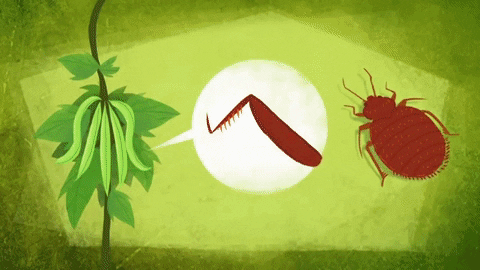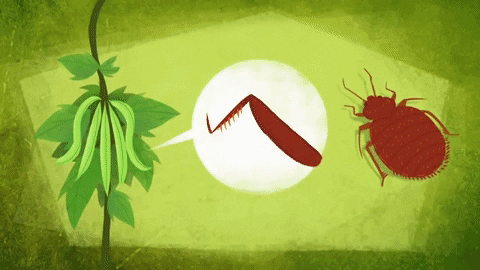How do plants protect themselves?
Plants often face attacks from fungi, bacteria, insects (aphids, caterpillars, grasshoppers, .) and animals that eat plants (pandas, elephants, .). They all view plants as a source of nutritious food.

The first is the physical defense methods on the surface. The trunk is usually surrounded by a layer of lignin-rich shells, which is often hard, very difficult to chew and also works to prevent pathogens from penetrating. Leaves are protected by wax shells that are immune to insects and microorganisms.

Although immobile but not helpless, plants also equip themselves with a variety of parts that can cause damage such as spikes, needles, hooks to warn and falter and make them less attractive in the eyes. large plant-eating species.

In order to handle small insects, some plants have needles, pointed and thin like feathers. Kidney beans have small hooks to stab the lice and other insects. In some species, fur can also release a compound including Histamine and other toxins that cause itching, pain and burns when touched.

Some other plants such as spinach, kiwi, pineapple, fuchsia and rhubarb are all equipped with countless tiny needles called Raphide . These sharp needles can cause pain with small lesions in the mouth of an animal when ingested.

The shy tree has another special defense mechanism. The specialized receptor for physical signals senses contact and transmits signals from the leaf blade to the petiole, making stem stem cells release ions, thereby causing cells to dehydrate, wilt, close leaves . This mechanism is quite useful because leaf folding will remove insects and wilting leaves look unattractive for large animals.

If external self-defense methods are not effective, the plant's immune system will be operated. When recognizing the presence of invading bacteria or insects, the immune system starts the defense mechanism. To prevent the pathogen from spreading into the plant, the outer wax layer thickens and the cell membrane becomes stronger, stomata on the leaves close.

If the bacteria attack a part of the plant, the cells there will self-destruct to avoid spreading the pathogen, while the toxic compounds are also created to eliminate the intruder.

In addition, when an attacked part can signal other regions with hormones and electrical signals, when these signals are received, other parts of the plant will increase the secretion of defense compounds. But yet, they even have the ability to release compounds that warn nearby plants to be able to release insect repellents earlier.

Some trees can also call allies to create to ward off attackers. The cotton plant when attacked by caterpillars releases special compounds into the air, which attracts parasitic bees to lay eggs into caterpillars.

Unlike animals that use teeth and nails to defeat enemies, plants possess powerful weapons, abundant chemicals, warnings from neighbors and collaborating with other species, see gentleness, not at times. It's easy!
- 7 species of plants have special abilities like humans
- Plants on mountains avoid impacts of global warming
- Plants can hear sounds when they are eaten
- Species protect themselves when bitten
- The project turns trees into multi-purpose biological sensors
- Simple way to protect your car on hot days
- Trees also behave like people
- Apocalyptic Tunnel
- 80,000 species of plants on Earth are about to become extinct
- How is 'that' in plants?
- There is no brain but plants are smarter than we think
- Extremely hidden carnivorous plants
 Why do potatoes have eyes?
Why do potatoes have eyes? 'Tragedy' the world's largest carnivorous life: Death becomes ... public toilet
'Tragedy' the world's largest carnivorous life: Death becomes ... public toilet Tomatoes were once considered 'poisonous' for 200 years
Tomatoes were once considered 'poisonous' for 200 years Detecting microscopic parasites on human face
Detecting microscopic parasites on human face Top 5 plants with special abilities
Top 5 plants with special abilities  Mushrooms - The silent 'architects' of nature
Mushrooms - The silent 'architects' of nature  Technology of growing plants in the dark
Technology of growing plants in the dark  We are about to understand the language of trees.
We are about to understand the language of trees.  Can animals heal themselves?
Can animals heal themselves?  Do fake plants make us feel good?
Do fake plants make us feel good? 